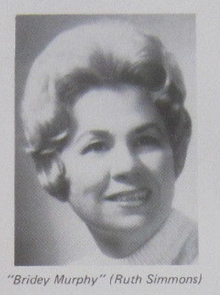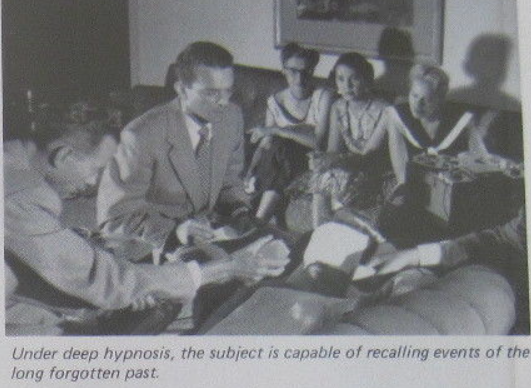On December 20th, 1798 in a small cottage called The Meadows, near the city of Cork in Ireland, Bridget Kathleen Murphy came into the world. The daughter of Duncan and Kathleen Murphy and younger sister of Blaine Duncan Murphy, she was raised to appreciate the culture of 19th Century Ireland. She was sent to a day school to learn to be a ‘lady’. Her barrister father taught her about the poetry of Keats and the tales of Irish mythology. The family spoke English rather than Gaelic, but used various dialect words, and as she grew up, her mother told her of the local custom of kissing the Blarney Stone at the nearby Blarney Castle.
In 1818 at St Theresa’s Catholic church, Belfast, she married Sean Brian MacCarthy, who, like her father, was a barrister. At their wedding, guests followed the tradition of putting coins into her dress pockets as she danced. Brian (he was known by his middle name) studied, and later took up a role teaching, at Queen’s University in Belfast. Alongside that he wrote articles for the Belfast News-Letter.
The couple remained childless and lived an unassuming, but happy, life in 19th century Belfast. She shopped in various stores, such as Carrigan’s grocery, and bought her clothing at Cadenns House drapers. She saw the advent of gas-lighting to the city, describing the long thin lampposts, topped with beautiful bright lights, dispelling the city’s dark corners.
Sadly, Bridey broke her hip falling downstairs, and she died at the age of 66. Her gravestone was marked ‘Bridget Kathleen M MacCarthy, 1798-1864’ (the ‘M’ standing for Murphy).
Her’s was an ordinary life that would otherwise have remained anonymous, but she remarkably become famous in 1950’s America. Her story was the subject of countless articles, books, hit records and even a major motion picture. Cocktails were created in her name, and revellers would host “Bridey Murphy” themed parties.
In addition, her story would popularise a whole new pseudoscience.
All this despite no real evidence she ever existed.

In order to tell the whole story, we need to meet Colorado businessman, Morey Bernstein. As well as running several businesses, he was a keen amateur hypnotist who would use his skills at social gatherings as a party trick, and to help friends overcome some minor ailments. In 1952, at a dinner party at the home of Virginia Tighe in Pueblo, Colorado, Bernstein offered to hypnotise Virginia to discover the cause of her allergies. He regressed her back to her childhood, hoping to determine if there was a long-hidden trigger to her issues, but at some point – to the astonishment of Bernstein and the other party guests – Virginia started speaking in a distinct ‘Irish’ accent, and instead of being an 8-year-old American, claimed to be 8-year-old Bridey, living in Cork in the early 1800’s.
Over the next few weeks and over several sessions, Bernstein tape-recorded his subject’s responses as he pushed her for more information about what he assumed was a past-life. When he had originally studied hypnosis, Bernstein was excited by the work of The Sleeping Prophet, Edgar Cayce. Cayce was the progenitor of so much new-age quackery that he deserves an article here all to himself. He was a fantasist who claimed to have access to angels, dream worlds, and past-lives; he claimed to be able to project his spirit across the universe, that he could see both the past and future, and that he could heal anyone via his powers even if not in the same room. All by putting himself, or his subjects, into a trance-like state.

Bernstein assumed that Tighe was able to access this world – and from there, to her previous life – because she was clearly in a trance-like state, and was revealing details that only someone who had lived that life could possibly know.
Virginia Tighe – at the time 29 years old – was born Virginia Mae Reese in Chicago and had never visited Ireland, nor had her family any connections to the country. Her parents were 2nd generation Scandinavian immigrants. For Bernstein, her ability to speak in an authentic Irish accent, and recount facts only someone native to Ireland would know, plus her uncanny ability to recall such intimate and precise details of a life once lived, was proof that she wasn’t lying.
The story subsequently appeared in the Denver Post in 1954, and Bernstein soon released a book: The Search for Bridey Murphy, in 1956. Tighe had asked to remain anonymous, so he changed her name to Ruth Mills Simmons to protect her identity.
in which Bernstein talks to Bridey
Murphy, via Virginia Tighe
The book caused a nationwide sensation, and the recordings made between them were released on LP records. Soon songs on reincarnation topped the charts, countless comedy routines, magazine articles and similar claims of past lives filled the US media.
As the New York Times put it:
Within months of the book’s publication in January 1956, it created a cultural brush fire, elevating hypnotism into something of a national mania and laying the groundwork for a later surge in interest in reincarnation and channeling.
The rights to the book had already been sold to Hollywood, so the film was released the same year.
Unfortunately, in his rush to release the book, Bernstein had failed to do much fact-checking of Virginia/Bridey’s claims. He had verified that the Belfast News-letter existed, as did Queen’s University. There was a St Teresa’s church in the Belfast phone book, and an English author had confirmed some of the dialect words used by Tighe were indeed Irish idioms, but because prior to 1864, no good records existed, an Irish law firm tasked with searching for any official birth, death or marriage records had stated they were unable to verify any of these details. Despite this the book was published.
Only then were others able to investigate properly, and it became clear that many of the facts did not add up. St Teresa’s didn’t exist until 1911. Catholics in Ireland would not have been allowed to become barristers until Catholic Emancipation in 1829. Her claim to learning about the luck brought by kissing the Blarney Stone as a child was strange, because it only became a popular myth after appearing in a poem in the 1840’s. Strangely, Tighe never mentioned the Great Famine, an event that would have dominated the life of anyone living in Ireland in the 1840’s.
It was soon discovered that Tighe was adopted and her birth parents – with whom she had lived until the age of 3 – were part Irish. A neighbour of her childhood home in Chicago was one Bridey Murphy Corkell, born in Ireland in 1892. In the 1930 census, Corkell’s sister Margaret Murphy was actually living with the Tighes, when Virginia would have been in her teens.
Most scholars now put Virginia Tighe’s story down to Cryptomnesia. This is where a subject may relay, what they believe to be something new, but is in reality a forgotten or long-dormant memory. There’s no accusation that Tighe was lying or making up stories to deceive, and it is not doubted she was in a trance-like state, but Bernstein’s rush to publish without any due diligence led to fleeting fame and a prominence for a pseudoscience that was taken all too seriously, when in reality it was nothing more than an interesting parlour game.
Listening to the recordings it is clear that much of the information is drawn from Tighe at Bernstein’s promptings. In her hypnotic state, she no doubt used faint memories passed onto her from the Irish immigrants she had known in her childhood, weaved with common tropes well known about Irish culture – such as the Blarney stone – to build an imagined life. There is no real evidence that past-life regression under hypnosis has any basis in fact. Despite this it is still offered as a ‘treatment’ by some maybe less than impeccably reputable therapists.



